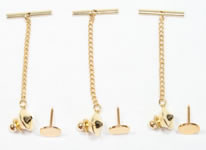How to Make a Polished Stone Tie Tack

The image above shows some of our favorite tie tacks. The stones used are from the polished stones menu at right. The stones pictured above from left to right are: sodalite, ocean jasper, snowflake obsidian, Botswana agate and gold tiger's-eye. Small-size and medium-size stones from our polished stone mixtures also work well for a tie tack.
|
Introduction
Making a polished stone tie tack is an easy and fun project that you can do yourself or with friends. A polished stone tie tack is a great gift. With tumbled stones you will be making unique tie tacks, that can be attractive, fun and interesting conversation pieces.

Step 1: Supplies to make a tie tack

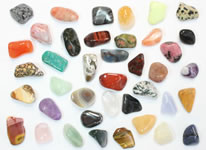
Step 2: Choosing a stone
When picking out a stone for a tie tack there are a few things to consider. First is the stone's color and pattern. You want a stone that will go well with a certain tie color. For example, if the tie is dark then a lighter colored stone will contrast well. If the tie is a lighter pastel color, a darker stone will work well.
You also need to consider the shape and size of the stone. The post diameter is about 3/8 of an inch, so using a stone that is 1/2 to 3/4 in size is ideal. The most important thing to consider about the shape is the back of the stone. You want the back of the stone to be flat so the post can be easily glued to the stone.

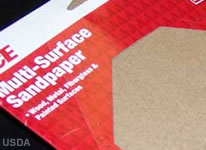
Step 3: Preparing the surfaces
Now that you have your stone picked out you need to prep the stone and post for gluing. Take the sandpaper and rough up the flat part of the tie tack post, and then rough up the stone where the flat will be glued.
The reason you are roughing up the surfaces is to give the epoxy some nooks and crannies to get into and hold onto better. Make sure you clean and dry both surfaces after sanding because the little particles that have been sanded off will stop the epoxy from adhering properly if they are not removed. (Sandpaper types that are hard enough to work on polished stones up to seven hardness are aluminum oxide and silicon carbide.)


Step 4: Using epoxy
The stone and tie tack surfaces are now ready to be joined together into a one of a kind tie tack. We use Epoxy 330 or a similar adhesive (we review several types of glue here) to affix all stones to jewelry findings because it dries clear and is very durable and long lasting. Epoxy 330 is a two part epoxy, part A is the resin and part B is the hardener. To use this epoxy put one drop of part A and one drop of part B onto a piece of cardboard and mix them together thoroughly. We use a toothpick or paper clip to mix the two parts together. Make sure that when you put part B on the cardboard the tip of the tube doesn't come in contact with part A because the tip will harden closed.

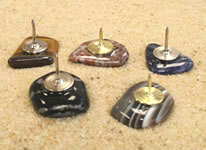
Step 5: Putting the stone and jewelry finding together
Now that your epoxy is mixed it's time to put the stone on the tie tack post. Using your toothpick or paper clip put a light coat of epoxy on the post. Make sure the entire flat of the post is covered. Take the epoxy covered post and place it on the flat back of the polished stone where you roughed it up.
The epoxy takes about 15 minutes to set and 2 hours to harden. This is where the recommended sand or clay comes in very handy.
Once the post and stone are together, place the stone in the sand or on the clay so that the post is sticking up and the back is level. If the stone is not sitting level, the post has a tendency to slide out of place because the epoxy is still in liquid form. This is why we recommend using the sand or clay.

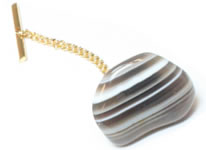
Step 6: Enjoy what you have made
Once the epoxy has hardened it is time to enjoy your one of a kind tie tack creation. As mentioned earlier a handmade tie tack makes a great gift. Don't be stingy, give them a couple of different tie tacks as most men have many different ties and one tie tack may not work with every tie. I have worn polished stone tie tacks to many different events and when I do someone always asks me about them. They are a good conversation starter and just down right nice to look at.

RockTumbler.com Authors
 |
Hobart M. King has decades of rock tumbling experience and writes most of the articles on RockTumbler.com. He has a PhD in geology and is a GIA graduate gemologist. He also writes the articles about rocks, minerals and gems on Geology.com. |


